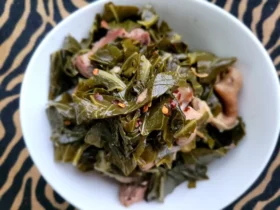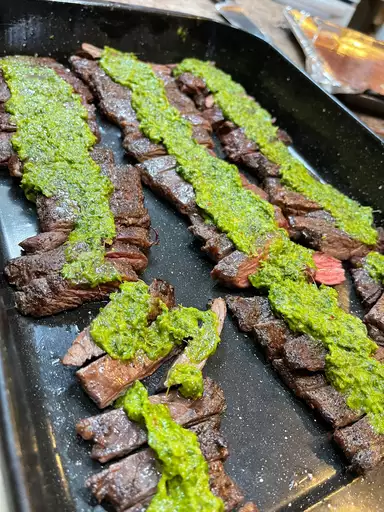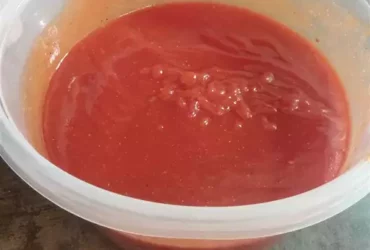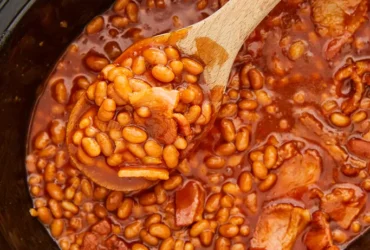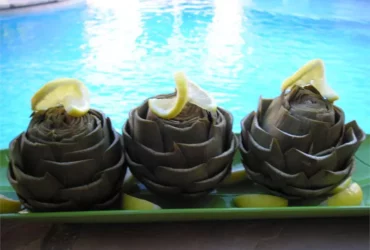Ingredients
Parsley and Oregano
The ingredients for this Easy Chimichurri Recipe are a crucial component that sets the stage for the bold and vibrant flavors that define this classic Argentinean condiment. Among the essential herbs, parsley and oregano stand out as the main players in this culinary dance.
Parsley
Parsley, with its fresh, green leaves, is a staple herb in many cuisines around the world. In the context of Chimichurri, parsley’s unique characteristics make it an ideal addition to the recipe. The most commonly used variety for culinary purposes is curly-leaf parsley (Petroselinum crispum).
Parsley offers several benefits that enhance the overall flavor and texture of the chimichurri:
- Its mild, slightly bitter taste provides a refreshing contrast to the pungency of the oregano.
- The delicate crunch of parsley adds texture to the sauce, making it more appealing to the palate.
Oregano
Oregano (Origanum vulgare), on the other hand, is known for its strong, earthy aroma and pungent flavor. Oregano’s potent taste is a defining characteristic of many Mediterranean dishes, including chimichurri.
In Chimichurri, oregano plays a pivotal role in:
- Enhancing the depth and richness of the sauce, adding complexity to its flavor profile.
- Complementing the acidity from the vinegar, creating a harmonious balance between flavors.
The combination of parsley’s freshness and oregano’s earthiness in this Easy Chimichurri Recipe creates a truly unique and delicious flavor experience. By understanding the characteristics and benefits of these two essential herbs, you can appreciate the artistry that goes into crafting this beloved Argentinean condiment.
Fresh parsley leaves
Fresh parsley leaves are an essential ingredient in the classic Argentinean herb sauce known as chimichurri. The leaves bring a fresh, bright flavor and a burst of color to the dish.
Parsley is a member of the carrot family and has been used for centuries as a culinary herb. Its leaves are typically dark green in color, with a spear-shaped appearance and a slightly bitter taste.
To make chimichurri, fresh parsley leaves are usually combined with oregano, garlic, red pepper flakes, red wine vinegar, salt, and olive oil. The exact proportions of the ingredients may vary depending on personal preference and regional traditions.
The freshness of the parsley is critical in chimichurri, as it provides a vibrant flavor that helps to balance the other ingredients. Fresh parsley can be found year-round at most supermarkets or farmers’ markets.
To use fresh parsley leaves in chimichurris, choose leaves with bright green color and no signs of wilting or yellowing. Rinse the leaves under cold running water before pat drying them with paper towels.
Remove any large stems from the parsley leaves and chop them coarsely. You can use a food processor to chop the parsley in batches until you get the desired consistency for your chimichurri.
For the best flavor, it’s recommended to make the chimichurris with fresh parsley just before serving or at least within an hour of preparing it.
This way, the flavors will be bright and vibrant, and the herbs will retain their color and aroma. Fresh parsley leaves are also great for other recipes such as salads, soups, sauces, and marinades.
Fresh oregano leaves
Fresh oregano leaves are an essential ingredient in many traditional Argentinean and Latin American dishes, particularly in sauces like chimichurri.
The key characteristics of fresh oregano leaves make them a great addition to this recipe. Their pungent, earthy flavor provides a nice balance to the bright, herby taste of parsley and the tanginess of red pepper flakes in the chimichurri sauce.
When selecting fresh oregano leaves for your chimichurri, look for ones with a vibrant green color and no signs of wilting or browning. The aroma of fresh oregano should be noticeable when you crush the leaves between your fingers.
To use fresh oregano in the Easy Chimichurri Recipe, simply chop about 2 tablespoons of the leaves along with parsley, garlic, red pepper flakes, red wine vinegar, and olive oil. You can either add them all together or do what some people like to do – make a sort of “oregano-only” sauce and mix it with the other ingredients just before serving.
Keep in mind that fresh oregano is quite potent, so be careful not to overdo it with the amount you use. The flavor can quickly become overpowering if too much is added.
Also consider freezing or drying some of your fresh oregano leaves for later use, as their flavor and aroma are best enjoyed when freshly harvested.
A few final notes on using fresh oregano in the Easy Chimichurri Recipe: you can store any leftover sauce with fresh oregano in it in an airtight container in the fridge for up to 1 week. It’s also worth noting that some people prefer to use only dried or frozen oregano when making chimichurri, as they claim it brings out more of the herb’s earthy flavor.
Overall, using fresh oregano leaves is an excellent way to enhance your Easy Chimichurri Recipe and make it truly authentic and delicious.
Garlic, Salt, and Pepper
For a classic Easy Chimichurri Recipe, you will need a combination of fresh herbs, acid, oil, and spices that come together to create an Argentinean-inspired sauce. The key ingredients include parsley, oregano, garlic, red pepper flakes, salt, and black pepper.
The aromatic flavor of garlic is a crucial component in chimichurri, as it adds depth and pungency to the sauce. Fresh garlic cloves are typically minced or finely chopped to release their oils and flavor compounds, which then blend with the other ingredients.
Salt is another essential ingredient in this recipe, serving as both a seasoning agent and a preservative. A pinch of salt enhances the flavors of the other ingredients while preventing bacterial growth and spoilage. You can use either fine or flaky sea salt, depending on your personal preference.
Black pepper adds a subtle yet aromatic flavor to chimichurri, complementing the bold flavors of garlic and herbs. Like salt, black pepper is used in moderation to enhance the overall taste without overpowering it.
The proportions of these ingredients can be adjusted to suit your taste preferences. Some people may prefer a stronger garlicky flavor or a more pronounced herbal note, while others might prefer a milder taste. The beauty of chimichurri lies in its adaptability and versatility, making it an excellent accompaniment for various meats, vegetables, and grilled dishes.
In the context of this Easy Chimichurri Recipe, the combined flavors of garlic, salt, black pepper, parsley, oregano, and red pepper flakes come together to create a tangy, savory, and aromatic sauce that elevates any meal. By balancing these ingredients, you can craft a delicious and authentic Argentinean-inspired chimichurri to enjoy with your favorite foods.
Minced garlic
Minced garlic is a fundamental ingredient in many sauces, marinades, and condiments, including the popular Argentinean herb sauce known as chimichurri.
The use of minced garlic in cooking is widespread due to its ability to add depth, richness, and a subtle pungency to a variety of dishes.
In the context of chimichurri, which is typically made with parsley, oregano, red pepper flakes, red wine vinegar, olive oil, salt, and black pepper, minced garlic plays a crucial role in balancing the flavors and adding a savory dimension to the sauce.
Mincing garlic involves finely chopping or crushing the cloves to release their oils and flavor compounds, which are then easily incorporated into sauces and marinades.
The process of mincing garlic can be done using a knife, food processor, or blender, depending on personal preference and the desired texture.
When working with minced garlic in recipes like chimichurri, it’s essential to use fresh, high-quality cloves that have not become soft or moldy over time.
This ensures that the garlic contributes its optimal flavor and aroma to the final dish without overpowering the other ingredients.
Overall, minced garlic is an indispensable ingredient in many recipes, including the classic chimichurri sauce, where it adds a unique and delicious depth of flavor that enhances the overall taste experience.
As such, it’s worth taking the time to choose fresh, aromatic garlic cloves and handling them with care to extract their full potential in your cooking.
Salt
Salt plays a crucial role in the preparation and preservation of various ingredients used in the classic Argentinean chimichurri sauce, which is a key component of many dishes in the easy chimichurri recipe.
One of the primary ingredients in this recipe that requires salt is parsley. Parsley’s natural bitterness is balanced by the addition of salt, creating an equilibrium of flavors in the dish.
The other main ingredient in chimichurri is oregano. Similar to parsley, oregano benefits from the application of salt as it heightens its earthy and slightly bitter undertones.
Parsley’s pungency is balanced by salt when combined with garlic in this recipe. Garlic can be quite overwhelming, but when tempered with salt, its flavor becomes more palatable and harmonious with other ingredients.
Salt enhances the delicate yet aromatic taste of cilantro as well. In the absence of salt, cilantro’s freshness could become overpowered by the other flavors present in chimichurri sauce.
Another ingredient that is affected by salt in this recipe is red pepper flakes. While not necessary for this recipe, adding salt to red pepper flakes allows them to add depth and a spicy kick without overpowering the other ingredients.
In addition to balancing the flavors of individual components within chimichurri sauce, salt helps bind all the ingredients together, creating a cohesive taste experience that complements various meats, vegetables, and bread.
Salt also aids in the preservation of freshness of parsley leaves. Fresh parsley can be quite delicate, but when preserved with salt, its natural flavor is maintained without compromising its texture or becoming overly wilted.
Pepper
The key to making a delicious chimichurri sauce lies in the quality and combination of its ingredients. A classic Argentinian herb sauce, it’s traditionally made with a mixture of parsley, oregano, garlic, red pepper flakes, salt, black pepper, red wine vinegar, and olive oil.
The main ingredient that gives chimichurri its distinct flavor is the pepper, specifically red pepper flakes. These flakes are made from dried and ground hot peppers, typically from the jalapeno or serrano variety. They add a spicy kick to the sauce, balancing out the brightness of the herbs and the richness of the oil.
Other essential ingredients in chimichurri include fresh parsley, oregano, garlic, salt, black pepper, red wine vinegar, and olive oil. The herbs are typically chopped or bruised to release their flavors and aromas, which then blend together with the other ingredients to create a smooth and vibrant sauce.
The quality of the ingredients is crucial in making a great chimichurri. Freshness matters, as wilted herbs will not give you the same flavor and texture as fresh ones. Choose parsley that has a vibrant green color and a slightly bitter taste, while oregano should be pungent and earthy.
For garlic, use high-quality cloves with no signs of sprouting or mold. As for vinegar, red wine vinegar is traditionally used in chimichurri, as it adds a tangy flavor that complements the herbs and peppers. Olive oil serves as the sauce’s base, providing creaminess and richness.
When combining these ingredients, start by mixing together parsley, oregano, garlic, salt, black pepper, and red pepper flakes in a bowl. Then, slowly add the vinegar and olive oil, stirring constantly until you achieve a smooth and emulsified sauce.
Remember that chimichurri is all about balance and harmony between its ingredients. Taste the sauce as you go, adjusting the seasoning with salt, black pepper, or red pepper flakes to suit your taste preferences. With these essential ingredients and careful attention to flavor, you’ll be well on your way to creating a delicious and authentic Argentinian chimichurri sauce.
Instructions
Making the Sauce
To make the sauce for this easy chimichurri recipe, you will need to combine a few key ingredients together and mix them thoroughly.
The first step in making the sauce is to finely chop up a large amount of fresh parsley. You can use either curly-leaf or flat-leaf parsley for this recipe, whichever type you have on hand or prefer.
Once you have chopped the parsley, place it into a blender or food processor along with the following ingredients: two cloves of garlic, minced; one-half cup of red wine vinegar; one-quarter cup of extra virgin olive oil; and one teaspoon of salt.
Blend the ingredients together until they are well combined and form a smooth sauce. Be careful not to over-blend the mixture, as this can cause it to become too thin and lose its texture.
Add in a few fresh oregano leaves that have been chopped finely into the blender or food processor with the other ingredients and blend again until they are fully incorporated.
Transfer the chimichurri sauce from the blender or food processor into a serving bowl. If desired, cover it with plastic wrap and refrigerate for at least 30 minutes before serving to allow the flavors to meld together.
This chimichurri sauce is great for dipping grilled meats, vegetables, breads and crackers in. It is also a tasty addition to many different types of dishes such as salads, soups and pasta dishes.
Combine minced garlic, salt, pepper, red pepper flakes (if using), and parsley in a food processor or blender.
- The first step in creating this delicious chimichurri sauce is to Combine minced garlic, salt, black pepper, red pepper flakes (if using), and chopped parsley in a food processor or blender.
- Start by mincing 3-4 cloves of garlic. If you’re not a fan of strong garlic flavor, use less. You can also roast the garlic in advance to mellow out its taste if desired.
- Next, add salt and black pepper to taste. Be cautious with the salt as it will help bring out the flavors in the other ingredients.
- If you’re using red pepper flakes, add them to give your chimichurri a spicy kick. You can adjust the amount to suit your desired level of heat.
- Chop about 1/4 cup of fresh parsley leaves and stems and add it to the processor or blender.
- Pulse the mixture several times until everything is well combined and the herbs are evenly chopped.
- Be careful not to overprocess, as this can create a bitter taste from the garlic.
- The resulting mixture should be a vibrant green color with a balanced flavor that’s perfect for serving alongside grilled meats or vegetables.
Process until well combined.
The instructions for making an easy chimichurri recipe involve several steps that require attention to detail and a bit of patience. The process begins with gathering the necessary ingredients, which include parsley, oregano, garlic, red pepper flakes, red wine vinegar, extra virgin olive oil, salt, and black pepper.
Once all the ingredients are in hand, the next step is to finely chop the parsley and oregano leaves. This can be done using a knife or a food processor, but be sure not to overprocess the herbs, as this can result in an unpleasant texture.
Next, mince the garlic cloves and mix them with the chopped herbs in a medium-sized bowl. The goal is to combine the two ingredients until they are well combined and there are no visible chunks of garlic remaining.
Now it’s time to add the red pepper flakes, salt, and black pepper to the bowl and mix everything together until the seasonings are evenly distributed throughout the herb mixture.
The next step is to slowly pour in the red wine vinegar while continuously stirring the mixture with a spoon. This helps to prevent the herbs from becoming too compacted and ensures that they remain loose and airy.
Once the vinegar has been fully incorporated, it’s time to gradually add the extra virgin olive oil. This should be done slowly and gently, as excessive pressure can cause the mixture to become too oily and lose its desired consistency.
The key to achieving a well-combined chimichurri sauce is to continue stirring the mixture until all of the ingredients have been fully incorporated and there are no visible signs of separation or clumping. This may take several minutes, but it’s essential for ensuring that the final product has the right texture and flavor.
Finally, once the chimichurri sauce has reached its desired consistency and flavor, it can be transferred to a serving bowl or container and stored in the refrigerator until ready to use. It’s worth noting that this recipe makes about 1 cup of chimichurri, which is equivalent to approximately 8-10 servings.
With motor running, slowly add olive oil through the top of the food processor.
In order to prepare this classic Argentinean herb sauce, also known as chimichurri, you will need to use a food processor.
Firstly, ensure that your motor is running by turning it on and allowing it to reach the desired speed.
Next, slowly pour olive oil through the top of the food processor. It is essential not to add too much at one time as this can cause the mixture to become uneven and difficult to process.
The slow addition of olive oil helps prevent the mixture from becoming too thick or separated, allowing for a smooth consistency and even distribution of flavors.
It’s worth noting that you should start with a small amount of olive oil and gradually increase it as needed. This will help you achieve the perfect balance of herbs and oil in your chimichurri sauce.
The key is to be patient and gentle when adding the olive oil, allowing the processor to do its job in creating a well-emulsified mixture that’s essential for the flavor and texture of this herb-based sauce.
Process for another minute or until desired consistency is reached.
The process of making chimichurri sauce involves a combination of herbs, spices, and acidity that come together to create a tangy and flavorful condiment.
To prepare this Argentinean-style herb sauce, you will need to gather the following ingredients:
- 1 cup fresh parsley leaves and stems
- 1 cup fresh oregano leaves
- 2 cloves garlic, minced
- 1/2 cup red wine vinegar
- 1/4 cup extra virgin olive oil
- 1 teaspoon salt
- 1/4 teaspoon black pepper
The first step in making the chimichurri is to combine the parsley, oregano, and garlic in a food processor or blender.
Pulse the herbs until they are well chopped and begin to break down.
Add the red wine vinegar, olive oil, salt, and black pepper to the processor.
Continue to pulse the mixture until it reaches the desired consistency. You may need to stop the processor and scrape down the sides with a spatula to ensure everything gets fully incorporated.
For an authentic Argentinean flavor, aim for a sauce that is thick but still pourable. If you prefer a smoother chimichurri, you can continue processing until it reaches your desired consistency.
Once the chimichurri has reached your liking, taste and adjust as necessary. You can add more vinegar if you want a tangier sauce or more olive oil if you prefer a creamier one.
The final step is to transfer the chimichurri to an airtight container and refrigerate it for at least 30 minutes before serving.
This allows the flavors to meld together and gives the sauce time to thicken slightly. You can store any leftover chimichurri in the fridge for up to one week, but it’s best enjoyed fresh.
Usage Tips
Tasting and Adjusting
The ease with which you can prepare and customize this Argentinean herb sauce, known as chimichurri, depends on several factors including the type of herbs you use, your desired level of garlic intensity, and whether or not you prefer a tangy or slightly sweet flavor.
When using fresh oregano and parsley in your chimichurri, be mindful that some individuals may experience a bitter taste from these herbs. To minimize bitterness, try adding more cilantro than oregano to your mixture, as the latter’s robust flavor can sometimes overwhelm the other ingredients.
Parsley adds a bright freshness to your chimichurri, making it a crucial component of this herb sauce. To maximize its potency, use curly-leaf parsley leaves instead of flat Italian parsley for their more delicate taste and aroma.
Red pepper flakes bring a spicy kick to the table but may also contribute some heat to other dishes with which you plan to serve your chimichurri. If you prefer your sauce mild or want it suitable for younger family members, start by omitting these flakes altogether or substitute them with black peppercorns.
For those looking for a more complex and intense flavor, garlic cloves can be roasted at 350°F (180°C) in the oven until softened. This process helps release their inherent sweetness while minimizing any harsh pungency they may possess.
The vinegar used in your chimichurri will significantly influence its overall taste and character. For a tangy yet slightly sweet flavor, mix white wine and red wine vinegar with equal proportions or use apple cider vinegar as an alternative. White distilled vinegar has a more pronounced acidity and can be added sparingly for those preferring it.
Chimichurri pairs well with grilled meats, fish, vegetables and flatbreads, and can also serve as a dipping sauce for empanadas or croquettes.
Taste and adjust seasoning as needed.
To make a delicious Easy Chimichurri Sauce, it’s essential to taste and adjust seasoning as needed. This is where the magic happens, and you can customize the flavor to your liking.
The traditional Argentinean sauce has a bright, tangy flavor profile that’s achieved by balancing the acidity from the vinegar with the richness of the oil. To start, take a small amount of the chimichurri mixture on a spoon or the back of a fork and taste it carefully.
Pay attention to how the flavors balance together: are they too sharp from the red pepper flakes? Do you need a bit more acidity to cut through the richness?
This is where your personal taste preferences come into play. If you prefer a milder flavor, add a little more oil to dilute the vinegar and spices. Conversely, if you like it spicy, add another pinch of red pepper flakes or some diced fresh jalapeños.
Once you’ve adjusted the seasoning to your liking, give the mixture a good stir to distribute everything evenly. This will help prevent any flavors from getting too intense in certain areas of the sauce.
With this Easy Chimichurri Recipe, you’ll be able to taste and adjust as needed to suit your palate perfectly. So don’t be afraid to experiment – it’s all part of creating a truly delicious sauce!
Adjust to your taste with more salt, pepper, garlic, or herbs.
When it comes to making an easy chimichurri recipe, one of the key elements is adjusting the seasoning to taste.
This means that you have the flexibility to add more salt, pepper, garlic, or herbs to suit your personal preferences and the flavor profile you’re aiming for.
Adjusting the Seasoning:
- Salt: Start with a generous pinch of salt, then add more to taste. Salt enhances the flavors in the chimichurri, but be careful not to overdo it.
- Pepper: Black pepper is a classic pairing for herbs and adds depth to the sauce. Use freshly ground pepper for the best flavor.
- Garlic: If you’re a garlic lover, you can increase the amount of minced garlic to 4-5 cloves or more, depending on your taste buds.
- Herbs: Chimichurri is all about the herbs, so feel free to experiment with different combinations and quantities. You can add more parsley, oregano, thyme, or basil to suit your taste.
Tips for Adjusting the Flavor:
- If you prefer a milder chimichurri, start with smaller amounts of garlic and herbs and gradually add more to taste.
- For a stronger flavor, increase the amount of garlic, herbs, and spices in your initial mix.
- Consider using different types of salt, such as sea salt or Himalayan pink salt, for added depth and complexity.
- Taste and adjust as you go – chimichurri is meant to be a fresh and dynamic sauce that’s tailored to your taste preferences.
- By experimenting with these seasoning tips, you can create the perfect chimichurri recipe that suits your taste buds.
- Best Datanyze Alternatives for 2025 - April 24, 2025
- Best Hunter.io Alternatives for 2025 - April 22, 2025
- Best Lead411 Alternatives for 2025 - April 22, 2025


